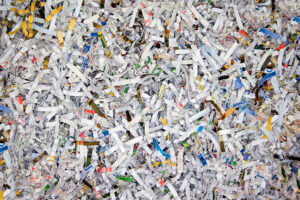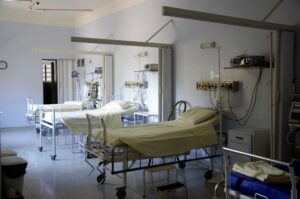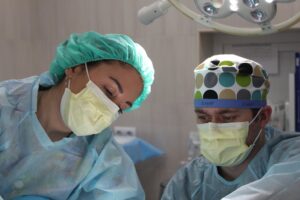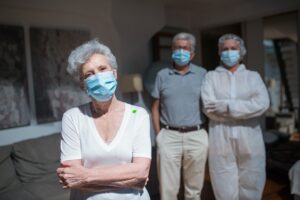Sharps injuries pose significant risks to healthcare workers, patients, and the public, highlighting the importance of effective sharps management and contamination mitigation strategies. This academic white paper explores the complexities of sharps handling in healthcare environments, citing government sources and providing practical tips for managing sharps waste to enhance safety and minimize the risk of exposure to bloodborne pathogens.
Introduction: Sharps, defined as objects capable of puncturing or lacerating the skin, are ubiquitous in healthcare settings and play a crucial role in medical procedures. However, improper handling and disposal of sharps can result in serious injuries and transmission of bloodborne pathogens, including hepatitis B virus (HBV), hepatitis C virus (HCV), and human immunodeficiency virus (HIV). This paper examines contamination mitigation techniques and waste management practices to mitigate the risks associated with sharps in healthcare environments.
Contamination Mitigation Strategies: Effective contamination mitigation strategies are essential to minimize the risk of sharps injuries and bloodborne pathogen transmission:
- Engineering Controls: Utilize engineering controls, such as safety-engineered sharps devices (SESDs) and needleless systems, to minimize the risk of sharps injuries and promote safer handling practices among healthcare workers.
- Administrative Controls: Implement administrative controls, including staff education and training programs, sharps injury prevention plans, and protocols for safe sharps disposal, to reinforce best practices and promote a culture of safety in healthcare facilities.
- Personal Protective Equipment (PPE): Ensure healthcare workers have access to appropriate PPE, such as gloves, gowns, and eye protection, to reduce the risk of exposure to blood and bodily fluids during sharps-related procedures and activities.
- Post-Exposure Prophylaxis (PEP): Establish protocols for prompt identification and management of sharps injuries, including access to post-exposure prophylaxis (PEP) medications and follow-up testing to mitigate the risk of bloodborne pathogen transmission.
Government Sources and Regulations: Government agencies, including the Occupational Safety and Health Administration (OSHA) and the Centers for Disease Control and Prevention (CDC), provide guidelines and regulations to promote safe sharps handling and waste management practices:
- OSHA Bloodborne Pathogens Standard: OSHA’s Bloodborne Pathogens Standard (29 CFR 1910.1030) establishes requirements for healthcare employers to protect workers from occupational exposure to bloodborne pathogens, including sharps safety measures, training requirements, and engineering controls.
- CDC Guidelines for Safe Injection Practices: The CDC’s Guidelines for Safe Injection Practices outline recommendations for healthcare providers to prevent unsafe injection practices, including the use of single-dose vials, proper medication preparation techniques, and safe sharps disposal procedures.
Managing Sharps Waste: Effective management of sharps waste is essential to minimize environmental contamination and protect public health:
- Segregation and Containerization: Segregate sharps waste from other medical waste streams and place them in puncture-resistant containers labeled with biohazard symbols to prevent accidental needlesticks and promote safe disposal.
- Disposal Options: Utilize authorized medical waste disposal services or facilities equipped to handle sharps waste in accordance with federal, state, and local regulations, ensuring compliance with waste management guidelines and environmental protection requirements.
- Community Disposal Programs: Educate patients and the community about proper sharps disposal methods, including the use of designated sharps disposal containers and participation in community-based sharps collection programs to prevent needlestick injuries and promote responsible sharps management.
Conclusion: In conclusion, effective management of sharps in healthcare environments requires a comprehensive approach that encompasses contamination mitigation strategies, adherence to government regulations, and safe sharps waste management practices. By implementing engineering controls, administrative controls, and PPE protocols, healthcare facilities can minimize the risk of sharps injuries and bloodborne pathogen transmission among healthcare workers and patients.
Moreover, collaboration among healthcare providers, government agencies, and community stakeholders is essential to promote awareness, facilitate compliance with regulatory requirements, and foster a culture of safety surrounding sharps handling and disposal. By prioritizing contamination mitigation and adopting best practices for sharps waste management, healthcare organizations can enhance safety, protect public health, and mitigate the risks associated with sharps in healthcare settings.










